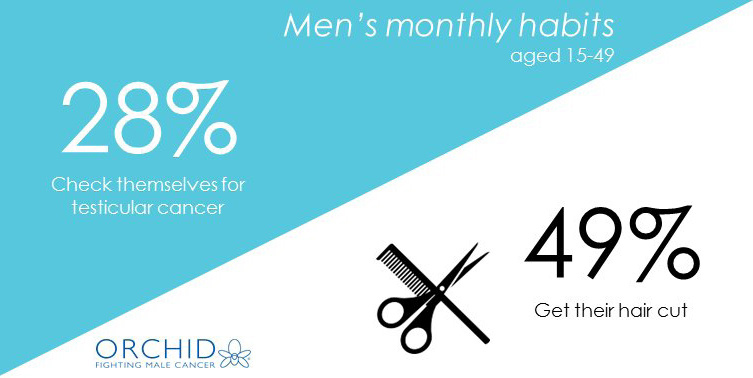
April is Testicular Cancer month, and there are many outlets promoting awareness of this specific cancer to promote more males to get tested.
Credit:@orchidcancer
Testicular cancer, according to Medicinenet.com, refers to a disease that occurs when the cells become abnormal/malignant, in the testicle of the male body. No smaller than a golf ball, these two organs are contained within a sac of skin called the scrotum, which hangs beneath the base of the penis. According to LiveScience.com, the functions of the testicles include: secretion of male hormones (e.g: testosterone) and the production of sperm (the male cells needed to fertilize the female egg for reproduction). According to the American Cancer Society, the testacies are made up of several different types of cells. As a result, there are several types of Testicular Cancer, which all fall under the following two categories: seminomas and non-seminomas. According to Medlineplus, Seminomas are the slowgrowing form of testicular cancer. Meanwhile nonseminomas develop faster and has several subtypes including: choriocarcinoma, yolk sac tumor, teratoma and more.
Although the direct cause of testicular cancer is not known, risk factors include: congenital abnormalities such as kidney or penile abnormalities, undescended testicle(s), family history of testicular cancer; also the most susceptible to this disease is white males, according to the American Cancer Society.
MayoClinic.org reports that though there may be no symptoms, persons may experience: pain in their lower back and groin, cancer-related fatigue, hernia, painless testicular lump, weight loss, swelling of the scrotum or swollen lymph nodes. American Cancer Society reports that in rare cases, the breast may grow as a result of tqhe tumor. Also, the same source reveals that some Leydig cell tumors produce androgens (male sex hormones); this is more likely to affect boys by causing signs of puberty at an unusually early stage for example: deepening of voice and growth of facial and body hair.
According to Medicinenet.com, testicular cancer is most common in 20-35-year-old men. When it comes to survivorship, the National Cancer Institute’s Surveillance, Epidemiology, and End Results (SEER) database divides the cancer into three stages. These stages are localized, regional, and distant.
The localized stage means that the cancer is just in the testicle. This has a survival rate of a hopeful 99 percent. With a survival rate of 96 percent, the regional stage means that the cancer has spread to nearby tissues and lymph nodes. The final stage, distant, refers to when the cancer has spread to organs or lymph nodes away from the tumor. This stage has a survival rate of 73 percent.
According to Cancer.net, for unknown reasons, the cases of testicular cancer has increased significantly over the past four years. However, the death rate continues to slowly decline. Persons die from this disease because the cancer has spread greatly, were not effectively treated, or encountered complications during treatment.
Recently, treatment methods for testicular cancer have been making a lot of progress. Doctors are more educated on the best ways to use treatment methods to treat the different types of testicular cancer and even surgical methods have been refined, according to the American Cancer Society.
The types of treatment you receive depends upon your stage. They include: chemotherapy, high-dose chemotherapy along with stem cell transplant, surgery (radical inguinal orchiectomy), and radiation therapy.





